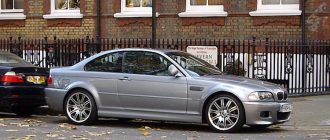Are you interested in Antique German Clocks? Learn more about the fine historical background of clock making and the antique German clock…
When thinking of German antique clocks, the famous cuckoo clocks come to mind. However, the beginning of the mechanical clock goes back to Germany and the country has a fine history of clock manufacturing that goes back to a few centuries.
Spring Driven Clocks
The spring driven clocks were developed as far back as the 15th century. In the beginning of the 16th century the first portable timepiece was invented by a boisterous inventor known as Peter Henlein. This was invented along with the watch mainspring in the town of Nuremberg in Germany.
Augsburg and Nuremburg
This event is considered the beginning of the history of the twin cities in Germany known as Augsburg and Nuremburg that lie in the south of Germany in Bavaria. The two towns became the center of high quality clock making during the 16th century. German antique clocks are known for their high precision movement and are collector’s items today.
Sophisticated Clockwork in Ornate Cases
Initially the spring driven table clocks from ancient times were either drum shaped or had square boxes and the dial was positioned right on the top. This sophisticated clockwork had quality fusee which controlled the power of the mainspring.
The early clockmakers in Germany hailed from families of goldsmiths, silversmith’s and jewelers. As a result the German clocks from the 16th century were well-crafted with very ornate metal cases. Most of the clocks had very exotic scenes of animals engraved on them.
In the antique German clock the dial had only a single hand to indicate time. This was marked in Roman numerals from 1 to 12. There was no minute hand or seconds’ hand. However, days were not divided into twelve hours in Europe at that time.
Advanced Gearing Technology
Augsburg was renowned as the center of the elaborate clocks which were brass-cased and followed the shape of a cathedral. It had multiple dials to show the phases of the moon, the day and position of the sun,moon and stars according to the zodiac.
Even the novelty clocks and automata started using the advanced gearing technology along with the proper calculation of gear ratios. The most famous form of automation was utilized to create animals with blinking eyes.
Moving Clocks
The other clocks actually moved across the table every hour. Two of the most famous ones are a ship on wheels and a horse drawn carriage.
Not only were they used to tell time but they were also perfect for entertaining and dazzling the wealthy dinner guests who would be sitting at the long tables.
Monstrance Clock
The other key timepiece was the the Augsburg based monstrance clock or the mirror clock. Following religious significance this clock was a cross shaped vessel made out of gold or silver. There was no dial to tell time but instead there was a ball either at the base or the top.
Vienna Regulator
The Vienna Regulator is an antique German clock which was placed on the wall and crafted out of wood. It had a very precise mechanism which was crafted around 1790 and used all the way to 1910 and was considered a very durable mechanical device for time keeping.




